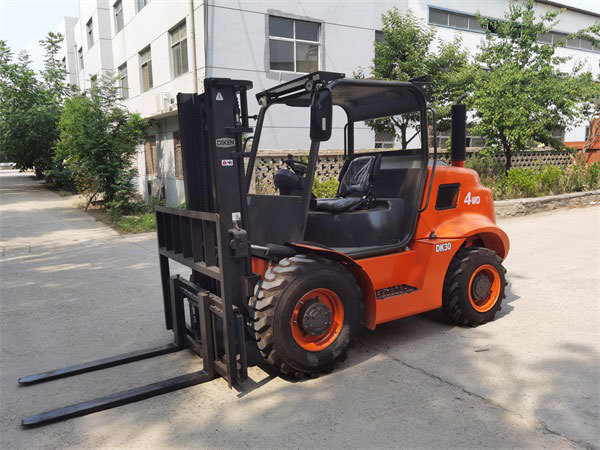Diken news
Enhancing Crop Handling with All Terrain Forklifts: A Comprehensive Guide
Release time: 2025-04-11
Enhancing Crop Handling with All Terrain Forklifts: A Comprehensive Guide
Table of Contents
1. Introduction to All Terrain Forklifts
2. Key Features of All Terrain Forklifts
3. Benefits of Using All Terrain Forklifts in Agriculture
4. Choosing the Right All Terrain Forklift
4.1 Factors to Consider
4.2 Types of All Terrain Forklifts
5. Operational Guidelines for All Terrain Forklifts
6. Maintenance Best Practices for Longevity
7. Safety Measures When Operating All Terrain Forklifts
8. Conclusion
9. Frequently Asked Questions (FAQs)
1. Introduction to All Terrain Forklifts
In the ever-evolving agricultural landscape, efficiency is key. **All terrain forklifts** emerge as a game-changing solution for crop handling, designed to navigate diverse terrains while providing robust lifting capabilities. These versatile machines are essential in modern farming operations, helping farmers streamline their workflows and improve overall productivity.
2. Key Features of All Terrain Forklifts
All terrain forklifts come equipped with a range of features that cater specifically to agricultural needs. Understanding these features is crucial when considering their adoption in your operations.
2.1 Four-Wheel Drive Capability
The **four-wheel drive** system ensures maximum traction and stability, allowing forklifts to traverse uneven and muddy surfaces without sacrificing performance. This capability is vital during planting and harvesting seasons when soil conditions can be challenging.
2.2 Adjustable Forks and Lifting Heights
All terrain forklifts typically feature adjustable forks, which can be extended or retracted to accommodate different load sizes. Furthermore, they can achieve varying lifting heights, making it easy to stack or transport materials efficiently.
2.3 Enhanced Stability Features
With features like **stabilizers** and wide wheelbases, these forklifts provide excellent balance, particularly when loaded. This aspect ensures safety and reduces the risk of tipping over during operations.
2.4 Rollover Protection Systems (ROPS)
Safety is paramount in agriculture. All terrain forklifts are often equipped with ROPS to protect operators in case of an accident. This feature enhances the safety profile of these machines.
3. Benefits of Using All Terrain Forklifts in Agriculture
The integration of all terrain forklifts into farming operations offers numerous advantages.
3.1 Increased Efficiency in Crop Handling
These forklifts significantly reduce the time and effort required for lifting and transporting crops, thereby increasing overall operational efficiency.
3.2 Versatility Across Different Terrain Types
Whether it’s rocky fields, muddy grounds, or uneven surfaces, all terrain forklifts can handle various landscapes, making them indispensable for farmers.
3.3 Cost-Effectiveness in Long-Term Operations
Investing in all terrain forklifts can lead to savings over time. Their durability and reduced need for frequent repairs contribute to lower operational costs.
3.4 Enhancing Worker Productivity
By simplifying the handling of heavy loads, these forklifts enable workers to accomplish more in less time, ultimately helping to boost productivity.
4. Choosing the Right All Terrain Forklift
Selecting the right all terrain forklift can be a daunting task. It’s essential to consider various factors to make an informed decision.
4.1 Factors to Consider
When choosing an all terrain forklift, consider the following:
- **Load Capacity:** Determine the maximum weight you expect to lift.
- **Lift Height:** Assess the height requirements for your operations.
- **Terrain Type:** Analyze the kind of terrain where the forklift will be operated.
- **Budget:** Establish a budget that encompasses not just the purchase but also maintenance and operating costs.
4.2 Types of All Terrain Forklifts
Different types of all terrain forklifts cater to specific needs:
- **Standard Models:** Best for general agricultural tasks.
- **Telehandlers:** Equipped with telescoping arms for extended reach, ideal for lifting heavy loads to greater heights.
- **Compact Models:** Designed for tighter spaces, providing maneuverability without sacrificing performance.
5. Operational Guidelines for All Terrain Forklifts
Proper operation is crucial to maximizing the benefits of all terrain forklifts.
5.1 Training and Certification
Ensure all operators are trained and certified in the use of all terrain forklifts. This training should cover basic operations, safety protocols, and emergency procedures.
5.2 Pre-Operational Checks
Conduct thorough pre-operational checks before use. This includes inspecting fluid levels, brakes, and tires. Ensuring the forklift is in good working condition prevents accidents and breakdowns.
5.3 Load Management
Always adhere to the manufacturer’s guidelines regarding load limits. Distribute loads evenly to maintain stability during transport.
5.4 Maneuvering Techniques
Operators should practice safe maneuvering techniques, such as turning slowly and using proper signaling when navigating around corners or obstacles.
6. Maintenance Best Practices for Longevity
Keeping all terrain forklifts in optimal condition is key to longevity and efficiency.
6.1 Regular Maintenance Schedule
Establish a regular maintenance schedule that includes oil changes, brake inspections, and tire rotations. Regular upkeep minimizes the risk of mechanical failures.
6.2 Cleaning and Upkeep
After each use, clean the forklift to prevent the buildup of dirt and debris. This practice not only improves performance but also extends the machine's life.
6.3 Monitor Wear and Tear
Keep an eye on components that may wear over time, such as tires and hydraulic systems. Addressing these issues promptly can prevent costly repairs down the line.
7. Safety Measures When Operating All Terrain Forklifts
Safety should always be a priority during forklift operations.
7.1 Wearing Personal Protective Equipment (PPE)
Operators should wear appropriate PPE, including hard hats, gloves, and steel-toed boots, to minimize the risk of injury.
7.2 Establishing Safety Protocols
Create a set of safety protocols that address common hazards associated with forklift operation. Regular safety meetings can help reinforce these protocols among employees.
7.3 Conducting Safety Audits
Regular safety audits can identify potential hazards and areas for improvement in your operational guidelines.
8. Conclusion
All terrain forklifts are indispensable in today’s agricultural operations, offering efficiency, versatility, and safety. By understanding their features, choosing the right model, and adhering to best practices, farmers can enhance their crop handling capabilities significantly. Adopting these machines not only streamlines operations but also ensures a safer working environment for all employees.
9. Frequently Asked Questions (FAQs)
What is the primary use of all terrain forklifts in agriculture?
All terrain forklifts are primarily used for lifting and transporting heavy loads across various types of terrain in agricultural settings.
How do I know which all terrain forklift is suitable for my farm?
Consider factors such as load capacity, lift height requirements, and the terrain type when selecting an all terrain forklift.
What safety features should I look for in an all terrain forklift?
Look for features like rollover protection systems (ROPS), stability enhancements, and robust braking systems to ensure operator safety.
How can I extend the life of my all terrain forklift?
Regular maintenance, thorough inspections, and proper cleaning can significantly extend the lifespan of your all terrain forklift.
Is training necessary for all terrain forklift operators?
Yes, proper training is essential to ensure that operators are aware of safety protocols and operational best practices to minimize risks.
Enhancing crop handling with all terrain forklifts is a strategic investment for farmers looking to optimize their productivity and efficiency. By utilizing the insights provided in this guide, agricultural operations can significantly improve their handling processes and ensure a more streamlined workflow.
Keywords: all terrain forklift










